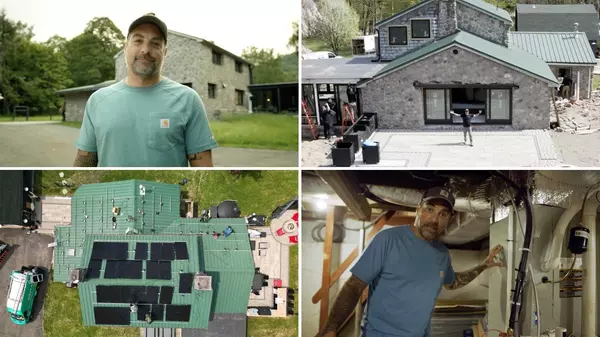Vermont Is Failing in Affordability and Homebuilding: Can Gov. Scott Reverse the Shortfall?
Vermont’s housing market has become one of New England’s most constrained, where limited construction and surging demand have eroded affordability.
The Realtor.com® State-by-State Housing Report Card gave the Green Mountain State a C-, signaling both a serious shortage of homes and widening cost pressures. The report—part of the Let America Build campaign—grades every state on how well it balances affordability and homebuilding.
President Donald Trump recently put pressure on homebuilders to increase construction nationwide, given the issues with construction in the country. In a post on his Truth Social platform in early October, he accused major builders of hoarding lots to prop up prices—likening them to OPEC, which restricts oil output to maintain high prices.
“They’re my friends ... but now, they can get Financing, and they have to start building Homes. They’re sitting on 2 Million empty lots, A RECORD,” Trump wrote. He urged Fannie Mae and Freddie Mac to intervene and “get Big Homebuilders going” to “restore the American Dream.”
Vermont’s results show a market under strain, with prices rising faster than new homes can be built.
Vermont’s “C-” grade explained
Realtor.com’s analysis gave Vermont a total score of 43.0, placing it among the lowest-ranked states nationwide. The state’s median listing price was $493,716 in 2024, compared with a median household income of $79,794.
On the construction front, Vermont accounted for only 0.2% of national housing permits in 2024 while representing 0.2% of the U.S. population—a permit-to-population ratio of just 0.5.
The new construction premium—the difference between new and existing home prices—was 51.5%, suggesting that new builds are largely concentrated in higher-cost markets.
The Northeast’s construction gap
Across the nation, new construction is helping cool price growth, but the Northeast remains the most supply-constrained region. According to the Realtor.com New Construction Insights report, the median new-home price held at $450,797, while resale prices rose 2.4%, narrowing the national new construction premium to just 7.8%—the lowest in recorded history.
But in the Northeast, Realtor.com data show the opposite trend: very little new supply and some of the largest premiums in the country. Limited developable land, lengthy approval processes, and high costs have kept builders from delivering affordable homes at scale.
Vermont’s rural nature and strong environmental protections make development particularly difficult. Builders face high per-unit costs, while zoning rules often restrict density even near job centers like Burlington and Montpelier.
But again, the pinch is being felt all over.
“America is short more than 4.7 million homes, and every new home built helps close that gap while fueling local economies," says Shannon McGahn, executive vice president and chief advocacy officer at the National Association of Realtors®.
"NAR research shows that the U.S. has faced a persistent housing shortage for more than a decade, driving up prices and limiting options for buyers. Expanding housing supply creates jobs, supports small businesses, and affords families the opportunity to build generational wealth.”
Governor Scott’s plan to expand housing
In January 2025, Governor Phil Scott introduced the Pathway to Accelerating and Transforming Housing for Vermont, a legislative package designed to make the state more supportive of new housing development. The proposal included updates to Act 250 and other state permitting processes, reforms to the appeals system, and measures to address local permitting barriers.
After limited legislative progress on the proposal, Scott signed an executive order in September intended to speed up housing construction by streamlining permitting and modifying certain environmental and climate-related regulations, a move that was backed by members of the Vermont Builders and Remodelers Association.
At a weekly press conference, the governor said he issued the order because lawmakers had not taken sufficient steps to reduce what he described as regulatory delays that contribute to Vermont’s housing affordability challenges.
“For years I’ve sounded the alarm about the housing shortage in Vermont,” Scott said. “Despite many agreeing, we haven’t done anywhere near enough to make a real dent in the number of homes we need.”
The executive order, which took effect immediately and will remain in place through 2027, aims to support the construction of approximately 40,000 new homes by 2030. The 10-page order includes provisions related to energy efficiency requirements, wetland setbacks, and appeals procedures.
“This will make a real difference immediately,” said Alex Farrell, commissioner of the Department of Housing and Community Development.
Environmental and civic organizations have raised concerns about the order, arguing that it exceeds the governor’s authority. In a letter sent to top administration officials, several groups stated that the order—issued while the legislature was out of session—“directly undermines the authority of the legislature and the separation of powers” outlined in the Vermont Constitution.
This article was produced with editorial input from Dina Sartore-Bodo and Gabriella Iannetta.
Categories
Recent Posts










GET MORE INFORMATION

